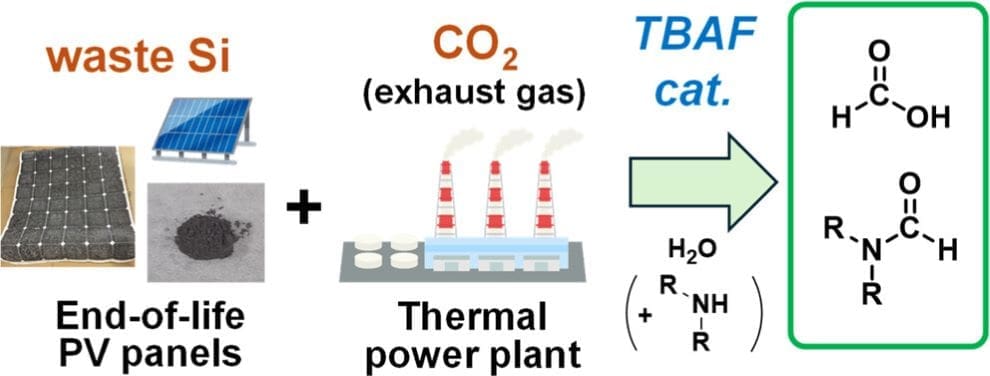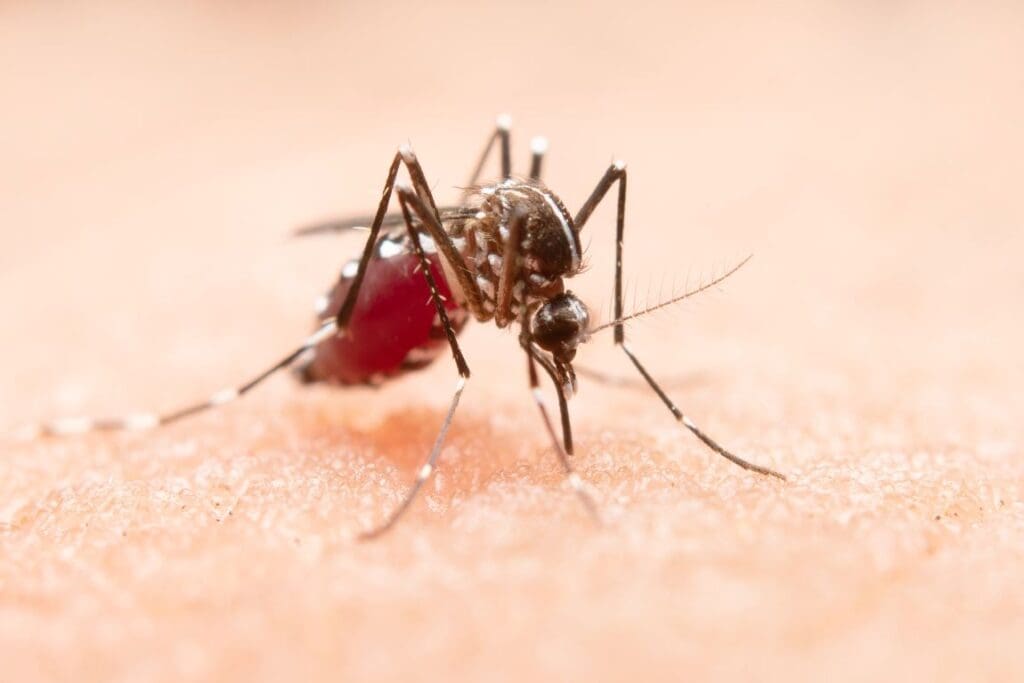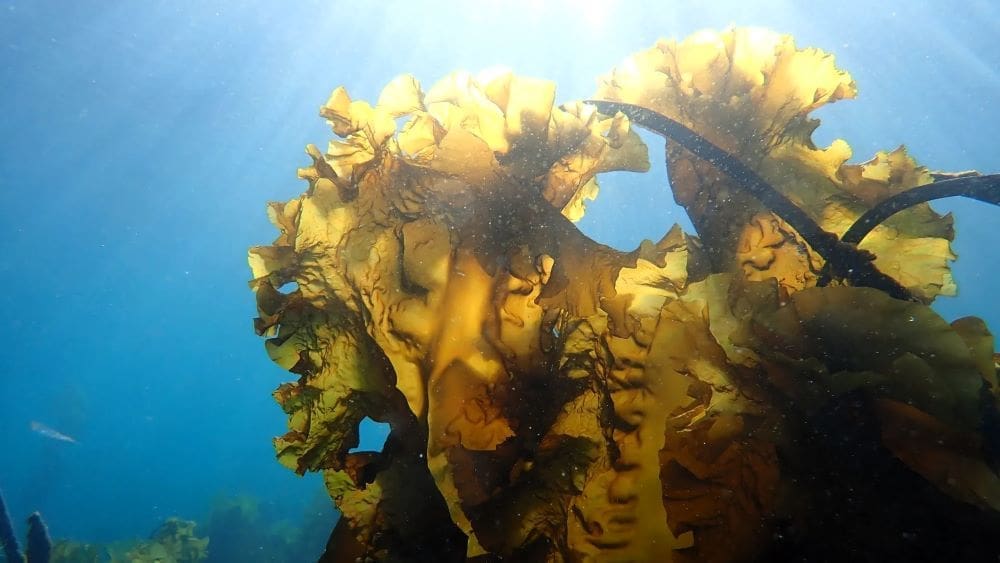Explore the latest insights from top science journals in the Muser Press daily roundup (July 18, 2025), featuring impactful research on climate change challenges.
In brief:
Scientists repurpose old solar panels to convert CO₂ exhaust into valuable chemicals
Centuries ago, alchemists worked furiously to convert the common metal lead to valuable gold. Today, chemists are repurposing discarded solar panels to create valuable organic compounds from carbon dioxide (CO₂), a common greenhouse gas.
Significantly reducing greenhouse gases in the atmosphere to mitigate the most devastating effects of climate change will require a large reduction in emissions as well as strategies designed to sequester emitted CO₂ and other offending gasses. While simply sequestering greenhouse gases would fulfill this goal, creating useful organic chemicals from waste CO₂ is akin to generating valuable materials from trash.
A team of chemists from Yokohama National University, Electric Power Development Co., Ltd. and the Renewable Energy Research Center at the National Institute of Advanced Industrial Science and Technology (AIST) recently decided to tackle two waste problems – excess CO₂ emissions and decommissioned solar panels – in the pursuit of creating value-added organic chemicals. The team designed a study to determine if recycled components of discarded solar panels could be used to efficiently convert CO₂ into useful, carbon-based compounds.
The researchers published their study in the journal ACS Sustainable Resource Management.

“In this study, we combined the recycling of waste silicon wafers from end-of-life solar panels with the conversion of CO₂ in the exhaust gas from a thermal power plant. The waste silicon wafer acts as a reducing agent of CO₂ to organic compounds,” said Ken Motokura, professor in the Department of Chemistry and Life Science at Yokohama National University in Yokohama, Japan and first author of the research paper.
The silicon wafers in solar panels can be separated from discarded panels in the panel recycling process. Importantly, the silicon wafers are effective at donating electrons to carbon compounds, including CO₂, which can be used to create larger, more valuable chemicals. While the reaction to create value-added organic chemicals from CO₂ and metallic silicon, which is present in silicon wafers of solar panels, is energetically favorable, few studies have examined the effectiveness of the reaction.
The team took crushed and milled silicon wafers from discarded solar panels and added a chemical catalyst to speed the production of organic compounds from waste CO₂. Initially, the research team had variable success creating formic acid, an organic chemical, from the milled silicon wafers. The researchers were able to overcome this limitation by pretreating the milled silicon wafers with hydrochloric acid (HCl), which removed aluminum (Al) from the surface of the wafer powder and increased the yield of the reaction.
“We directly converted CO₂ in the exhaust gas, which contained 14% CO₂ by volume, from a thermal power plant into formic acid and formamide through a reaction with waste silicon powder, water, and tetrabutylammonium fluoride, a catalyst. No separation and purification of CO2 from the exhaust gas is necessary. The contaminated Al in the waste silicon powder decreases the reaction rate, and appropriate pretreatment with HCl enables enhanced reactivity of the waste silicon,” said Motokura.
Ultimately, the reaction produced formic acid at high yields, reaching as high as 73%. Formamide, another value-added organic chemical, was also generated using the silicon powder in the presence of amines, which are organic chemicals containing nitrogen atom. The researchers were also successful in directly connecting their silicon-wafer reactor to the exhaust gas port of a thermal power plant, demonstrating the practicality of generating valuable formic acid from waste silicon wafers and emitted CO₂.
The International Renewable Energy Agency (IRENA) estimates that 60–78 MT of global photovoltaic (PV) panels will reach end of life by 2050. The research team hopes that this study will spur additional research into ways that recycled materials, like silicon wafers, can be used to sequester and convert waste and greenhouse gasses into other useful and valuable compounds, turning society’s waste into something more akin to treasure.
Yurino Sasaki, Yusuke Tanimura, Takuya Shiroshita and Shingo Hasegawa from the Department of Chemistry and Life Science at Yokohama National University in Yokohama, Japan; Kousuke Arata, Ryosuke Takemura and Kazuo Namba from the Electric Power Development Co., Ltd. in Kitakyushu, Japan; and Yuichi Manaka from the Renewable Energy Research Center at the National Institute of Advanced Industrial Science and Technology (AIST) in Fukushima, Japan also contributed to this research.
***
This study was supported by JST-ALCA-Next Japan Grant Number JPMJAN23C7, JSPS KAKENHI (Grant No. 23K23131) and Carbon Recycling Fund Institute.
Journal Reference:
Ken Motokura, Yurino Sasaki, Yusuke Tanimura, Takuya Shiroshita, Shingo Hasegawa, Kousuke Arata, Ryosuke Takemura, Kazuo Namba, and Yuichi Manaka, ‘Conversion of CO₂ in Exhaust Gas to Formic Acid and Formamides with Wasted Silicon Recovered from End-of-Life Solar Panels’, ACS Sustainable Resource Management (2025). DOI: 10.1021/acssusresmgt.5c00056
Article Source:
Press Release/Material by Yokohama National University
Vaccination could mitigate climate-driven disruptions to malaria control
Tropical cyclones in Madagascar lead to sharp spikes in malaria infections – particularly in children – due to interruptions in control efforts, according to a new study published in Science. However, the findings show that newly introduced long-lasting vaccines can help to mitigate these gaps. This points to pathways to climate-resilient control strategies in malaria-prone regions. Malaria, already a persistent global health challenge, poses new threats from climate change, not only through rising temperatures that shift mosquito dynamics but also via extreme weather events like tropical cyclones.

Such disasters can severely disrupt public health infrastructure, limit access to malaria prevention and treatment, and increase infection risk, especially in high-burden regions where continuity of care and malaria control is critical. However, despite concerns, data on how climate-related disruptions affect malaria control remain scarce. Madagascar – a country with a high malaria burden – is increasingly exposed to the effects of climate change, particularly through the growing frequency and intensity of tropical cyclones, which have repeatedly triggered severe damage to healthcare infrastructure.
Using a longitudinal cohort study of 500 households in Madagascar’s Mananjary district, Benjamin Rice and colleagues analyzed 20,718 observations of malaria infection before and after cyclones Batsirai (2022) and Freddy (2023). This allowed the authors to evaluate how well various malaria interventions performed given the strain of extreme weather events. According to the findings, tropical cyclones in Madagascar significantly elevate the risk of malaria infection and reinfection by disrupting essential public health interventions, including malaria prevention and treatment programs.
In the months following cyclones, malaria infection surged, particularly in children: up to half of school-age children and over a third of younger children were infected in high-transmission areas. By modeling various control strategies, the authors found that the recently introduced malaria vaccines, which offer up to 10 months of protection, could significantly reduce symptomatic infections and help sustain malaria infection control during climate-related intervention gaps.
Despite this, Rice et al. note that malaria vaccines alone are insufficient to stop transmission, adding that layered strategies combining vaccines, drug-based prevention, and traditional tools like bed nets are essential, especially in high-transmission areas where malaria remains persistent.
Journal Reference:
Benjamin L. Rice et al., ‘Vaccination to mitigate climate-driven disruptions to malaria control in Madagascar’, Science 389, 6757, eadp5365 (2025). DOI: 10.1126/science.adp5365
Article Source:
Press Release/Material by Walter Beckwith | American Association for the Advancement of Science (AAAS)
From kelp to whales: marine heatwaves are reshaping ocean life
New research from the University of Victoria (UVic) highlights how marine heatwaves can dramatically impact marine ecosystems and offers a stark preview of how future ocean warming will reshape ocean life.
From 2014 to 2016, the Pacific coast of North America experienced the longest marine heatwave ever recorded, with temperatures reaching two to six degrees above historical averages over a prolonged period. Researchers from UVic’s Baum Lab have compiled a comprehensive overview of the heatwave’s ecological impacts, reviewing the findings from 331 primary studies and governmental reports.
“The marine heatwave resulted in unprecedented ecological disturbance across thousands of kilometres of North America’s west coast,” says Samuel Starko, lead author and former UVic postdoctoral fellow. “Our comprehensive synthesis of the ecological impacts of the heatwave helps us to better understand its overall impacts and how these fit into the broader context of other marine heatwaves.”

According to the research, 240 different species were found outside of their typical geographic range during the heatwave, with many of them found further north than ever before. Several species, such as the northern right whale dolphin and the sea slug Placida cremoniana, were found over 1,000 kilometres north of their typical habitat.
The heatwave caused widespread kelp and seagrass declines and many kelp forests collapsed. Species from sea stars to seabirds died on unprecedented scales and unusual mortality events were observed in several species of marine mammal. A key rocky shore predator, Pycnopodia helianthoides, came close to extinction.
Many of the impacts of the heatwave were cascading, with direct impacts on some species driving complex dynamics that affected everything from plankton to whales. Temperature-linked diseases, such as sea star wasting disease, contributed to ecosystem collapse. The reduced abundance and nutritional quality of forage fish caused problems for predators. Plankton communities reorganized and offshore oceanographic productivity was altered.
The heatwave had economic costs as well. The closure of multiple fisheries, driven by changes in species interactions, disease proliferation and habitat loss, caused hundreds of millions of dollars in losses.
“As heatwaves become more frequent and intense under climate change, the 2014-16 Northeast Pacific marine heatwave provides a critical example of how climate change is impacting ocean life, and how our future oceans may look,” says Julia Baum, UVic marine ecologist and special advisor, climate. “This study underscores the urgent need for proactive, ecosystem-based marine conservation strategies and climate change mitigation measures.”
***
The research, published in ‘Oceanography and Marine Biology: An Annual Review‘, is supported by funding from the Natural Science and Engineering Research Council of Canada, Mitacs, Oceans North, Fisheries and Oceans Canada and the Forrest Research Foundation.
Research in the Baum Lab supports the United Nations Sustainable Development Goals (SDGs) No. 11 (life below water) and No. 13 (climate action). Learn more about the SDGs at UVic.
Reference:
Samuel Starko, Graham Epstein, Lia Chalifour, Kevin Bruce, Daisy Buzzoni, Matthew Csordas, Sean Dimoff, Rebecca Hansen, Dominique G. Maucieri, Jennifer McHenry, Kristina L. Tietjen, Brian Timmer, Julia K. Baum, ‘Ecological Responses to Extreme Climatic Events: A Systematic Review of the 2014–2016 Northeast Pacific Marine Heatwave’, Oceanography and Marine Biology: An Annual Review (2025). CRC Press, eBook ISBN: 9781003589600. DOI: 10.1201/9781003589600-2
Article Source:
Press Release/Material by University of Victoria (UVic)
Featured image credit: Gerd Altmann | Pixabay




